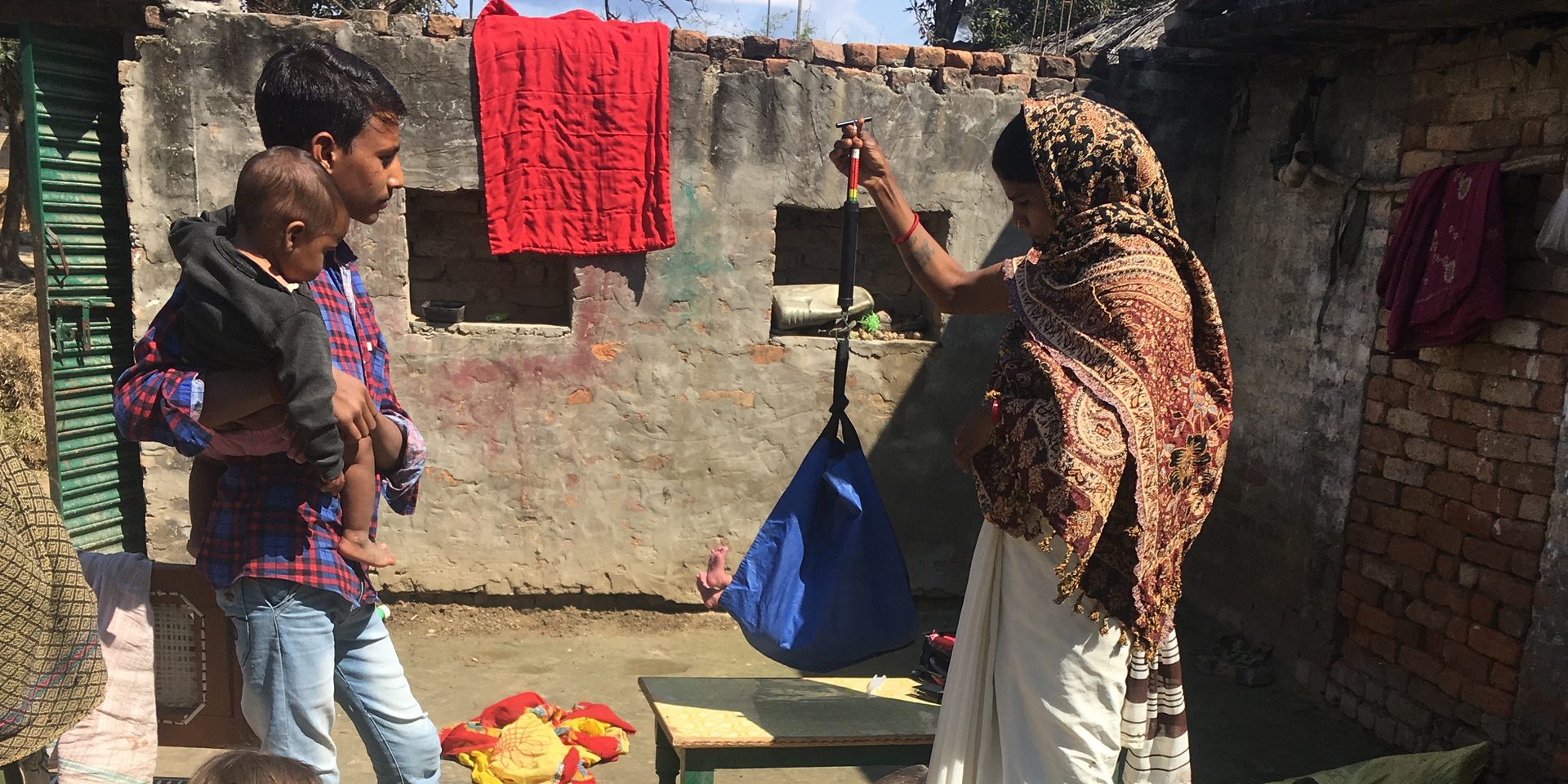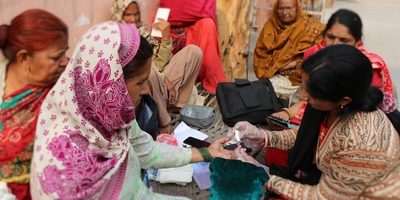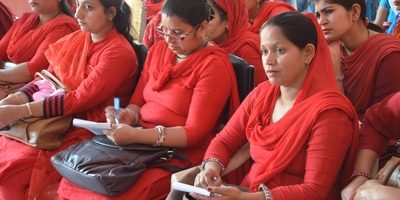
Hope of the health system, daughter- in-law of community: Reflections on India’s community health worker programme
The article is written by Dr Devaki Nambiar, Program Head – Health Systems and Equity, The George Institute for Global Health India and Ms Shreya Khaund
ASHA ka naam koi nahi jaanta.
(Nobody knows the ASHA’s name)Jab sarkar ne itna acha naam diya hai
(When the government has given such a good name)- ASHA-
toh usko dusre naam ki kya zaroorat hai?
(what need is there for another name?)[*]
These are the words of an 85-year-old woman from the north Indian state of Uttar Pradesh. She was talking to us this past winter about the community health worker, or ASHA, of her area. ASHA actually started off as an acronym for Accredited Social Health Activist, but in a number of north Indian languages, ASHA means hope. This comment was made in passing, but stuck in our heads as we moved ahead with our study assessing service delivery carried out by ASHAs under the aegis of the nation’s Comprehensive Primary Health Care (CPHC) Programme.
In village after village we visited, the ASHA was referred to as ‘ASHA bahu’ (ASHA daughter-in-law). This was a very literal description of who ASHAs were, for indeed, in the state of Uttar Pradesh as elsewhere in north India, most ASHAs are married women living in their husbands’ villages. Every part of the ASHA’s identity was relational: she was bahu of the village, ASHA of the government programme. But this was hardly unique. The ASHA was like other women in their community: her identity was built on her relations and associations with the men around her (wife of x, mother of y). Indeed, almost all women we encountered in this study didn’t mention their names. We were told, “Yeh dehaat hai; yahan pe koi kisi ka naam nahi jaanta’ (This is a rural area, here nobody knows anybody’s name).
Meanwhile, those of us who were from outside the village, were referred to by our names, and/or with the suffix didi (meaning sister). On the one hand, an ASHA being called ASHA bahu demonstrated the embeddedness of this programme in the rural context, its relevance and salience. But we had expected that recognition would go beyond the branding set up by the government for these volunteers.
Why wasn’t she called by her name when we were? Was this expectation naïve, based on our own misguided and privileged notions of identity?
India has among the world’s largest frontline health worker programmes. Launched as part of the National Rural Health Mission (NRHM) in 2005 (which was rechristened the National Health Mission, or NHM a decade later), the ASHA was conceived as a bridge between the community and health services. One woman per village (roughly 250 households) was to be selected locally and be trained for a month on basic health topics. She would go back to her community, talk to people about their health, help them access services, and make sure health was on the agenda of local committees and conversations. Over time, the ASHA would receive additional rounds of training and incentive-based payments for tasks related to maternal and child health, family planning, and other primary health care services. The programme provided a fillip to women’s participation in the health domain and has been credited with fostering women’s leadership in some cases as well.
A recent paper on the gender dimensions of the ASHA programme talks about its “instrumentalist origins,” where the selection of women for this cadre was built on assumptions that they are more appropriately engaged as volunteers[‡], in part because they are less likely than men to become unlicensed doctors. The paper notes also the preference for performance-based incentives because other frontline women workers in salaried positions – Anganwadi (or creche) workers, Auxiliary Nurse Midwives - have underperformed. Others have argued that since the entire parent programme of the National Health Mission is itself in ‘mission’ mode, the creation of a permanent government cadre of frontline workers is patently unfeasible.
This is true, but is it fair? Since India liberalised her-economy in the early 1990s, most social development programmes have operated in “mission mode” – ever tenuous, based on contracted human resources. So here again, the situation of ASHAs is not unique – she is a volunteer functioning in a mission-mode apparatus where most around her also face job precarity. She is embedded in the government setup – no exception is made in her treatment.
These examples and experiences have led us to a somewhat unsettling realisation: the more embedded a health worker is in her community as indeed in the health system, the less she can define her own role, assert her own rights and pursue her own goals. She is ever in service of her family, her community, her health department and its mission. It has proven difficult, for structural and historical reasons in India, to align the personal goals of the ASHA with the system goals of the programme that defines her roles.
Part of this is because senior health system actors – usually well-meaning, but under-represented by women, and indeed ASHAs – are deciding the scope of work, remuneration, and other critical decisions related to the ASHA programme. And for the reasons earlier described, it is not always possible to know-let alone accommodate – what ASHAs feel and want.
In a study we carried out in Chhattisgarh some years back, CHWs were truly grateful for the opportunities given to them to be ASHAS (in this state they were given the vernacular title of Mitanins). Prescient to global guidelines and standards (specifically Recommendation 9 of the 2019 WHO guidelines on health policy and system support to optimize community health worker programmes), the state had even envisioned career trajectories for these workers: Mitanins could over time become trainers and subsequently take up leadership positions in the programme. The state introduced training for them to advance to other roles, provided insurance coverage for their spouses and educational support for their children. But this didn’t quite square with what the Mitanins wanted. They saw themselves as workers deserving recognition as government employees and payment beyond performance incentives.[§] Their feeling was that their job demands far surpassed the compensation they were receiving both in terms of time and effort.
A recent review of research on India’s frontline health worker programme argues for “emancipatory research that engages ASHAs as agents to identify and work towards addressing challenges, and predictive research that helps guide next steps.” It would do us well to heed this advice.
ASHAs are workers, with rights and should be at the table making decisions.
Next week is an important one for ASHAs, given the proceedings of the World Health Assembly (WHA) related to community health workers. We welcome the Draft Resolution (EB144/CONF./4) which situates CHW roles at the interstice of the Sustainable Development Goal (SDG) related to health (#3) and to gender equality (#5). The endorsement in this Resolution of the carefully and systematically developed WHO guidelines on health system support for CHWs is also commendable. But for it to reflect the letter and spirit of these goals - we must see ASHAs and other health workers themselves in these spaces – walking the aisles, sharing their names and stories at the podiums of the World Health Assembly in Geneva with the same welcome and acceptance they have cultivated in the villages, towns, and neighbourhoods back home.




